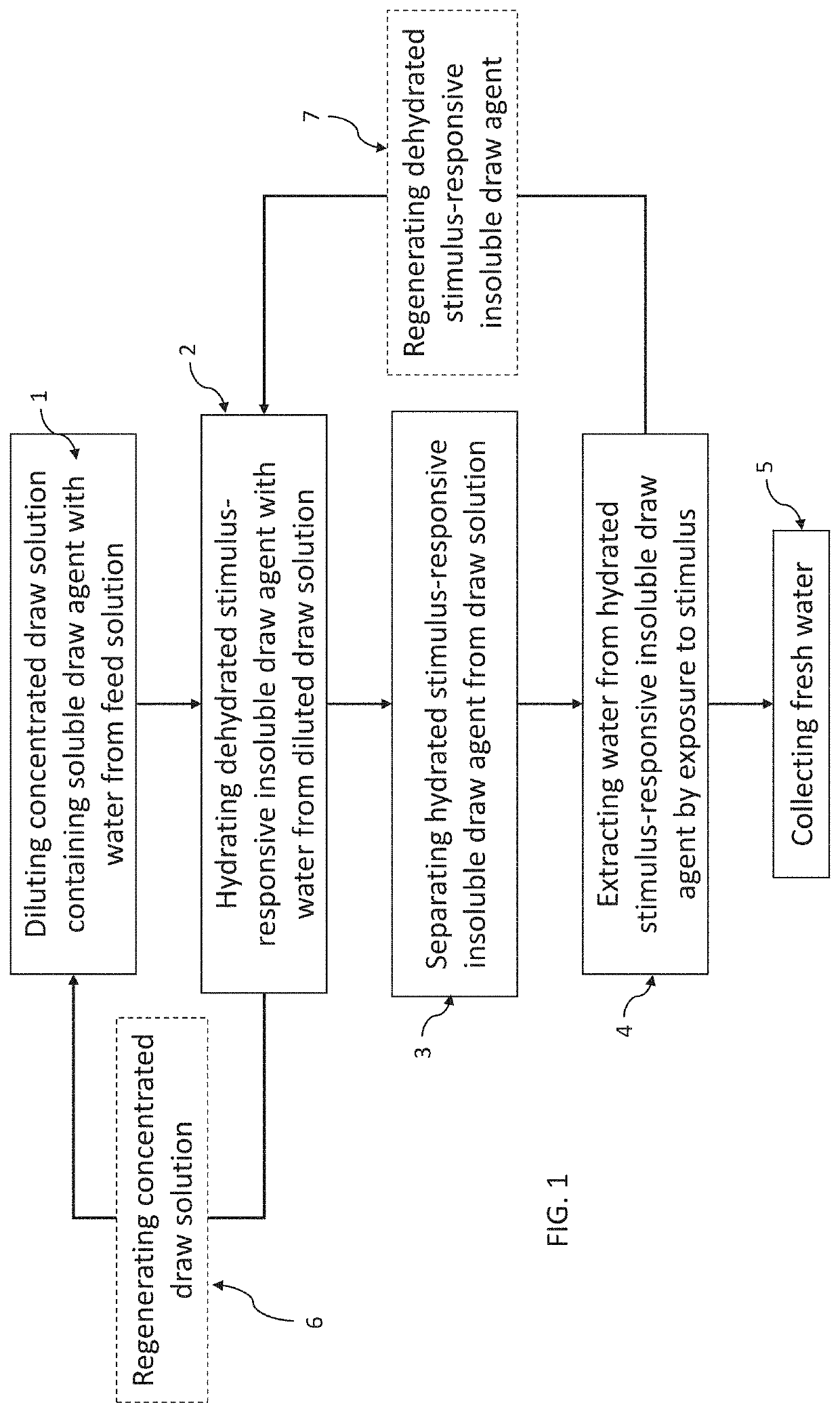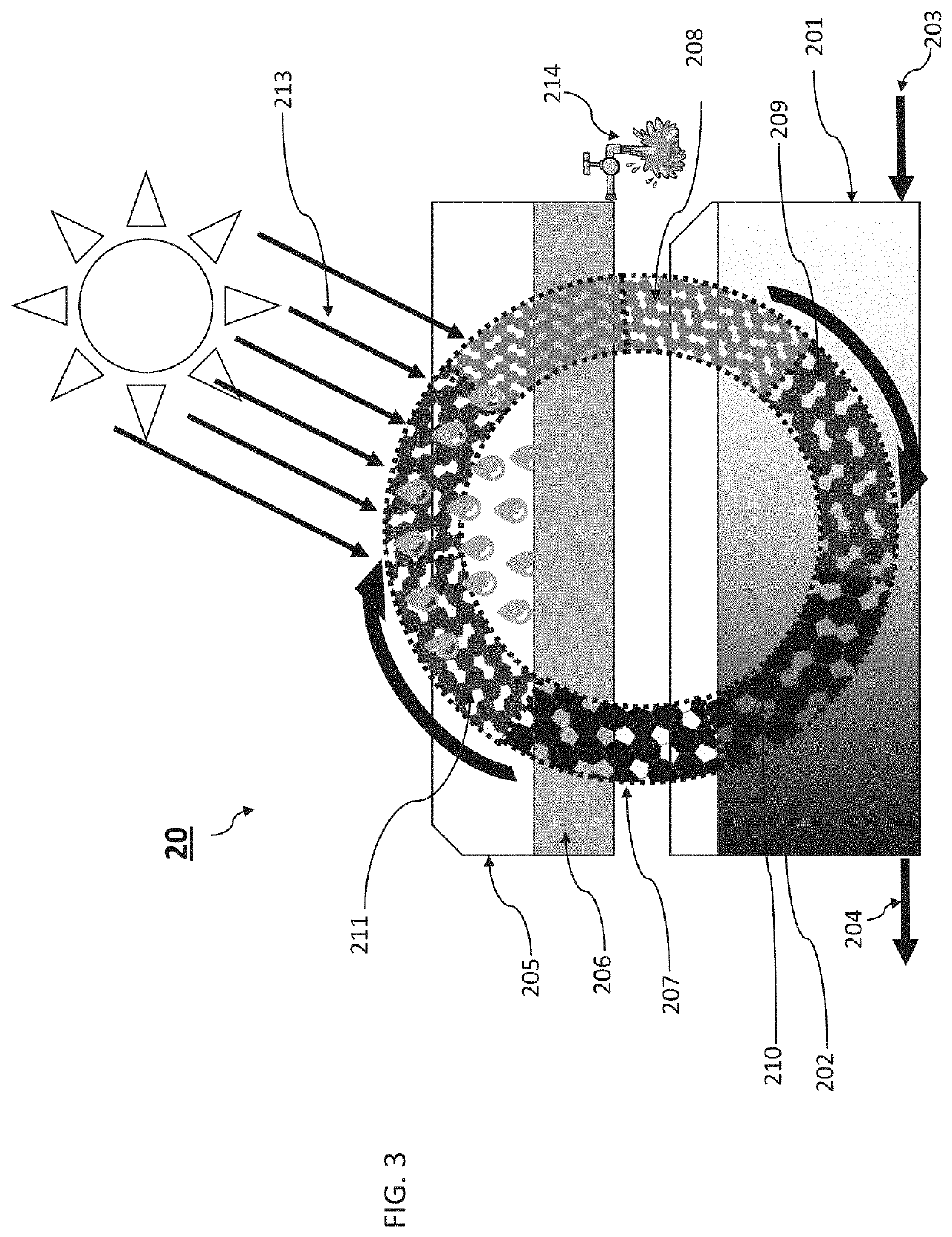Apparatus and process for separation of water from dissolved solutes by forward osmosis
a technology of dissolved solutes and apparatus, applied in the field of apparatus and methods for separation of water from dissolved solutes by forward osmosis, can solve the problems of high energy consumption, complex equipment, and high energy consumption of the process
- Summary
- Abstract
- Description
- Claims
- Application Information
AI Technical Summary
Benefits of technology
Problems solved by technology
Method used
Image
Examples
example 1
[0173]A proof of concept of some embodiments of the present invention, the concept of a semipermeable hydrogel, which can exclude a polyelectrolyte molecule while exhibiting a greater affinity to water, has been tested. In this example, poly(N-isopropylacrylamide) (PNIPAM) based LCST hydrogel [Suk-kyun Ahn, et al., Stimuli-responsive polymer gels, Soft Matter, 2008, 4, pp. 1151-1157], known to exhibit LCST below 40° C., and an aqueous solution of poly(sodium 4-styrenesulfonate) (PSSS), serving as a polyelectrolyte, were examined for the ability of the hydrogel to exclude the polyelectrolyte on swelling into PSSS solution.
[0174]N-isopropyl acrylamide (NIPA, 97%), methylenebisacrylamide (MBA, 99%) as a crosslinker, ammonium persulfate (APS, 98%) as an initiator, N,N,N′, N′-tetra-methyl-ethylene-diamine (TEMED, 99%) as an activator; poly(sodium 4-styrene-sulfonate) (PSSS, average Mw of about 1,000,000) as a polyelectrolyte, were all obtained at reagent grade from Sigma-Aldrich Israel, ...
PUM
| Property | Measurement | Unit |
|---|---|---|
| LCST | aaaaa | aaaaa |
| size | aaaaa | aaaaa |
| Tc | aaaaa | aaaaa |
Abstract
Description
Claims
Application Information
 Login to View More
Login to View More - R&D
- Intellectual Property
- Life Sciences
- Materials
- Tech Scout
- Unparalleled Data Quality
- Higher Quality Content
- 60% Fewer Hallucinations
Browse by: Latest US Patents, China's latest patents, Technical Efficacy Thesaurus, Application Domain, Technology Topic, Popular Technical Reports.
© 2025 PatSnap. All rights reserved.Legal|Privacy policy|Modern Slavery Act Transparency Statement|Sitemap|About US| Contact US: help@patsnap.com



